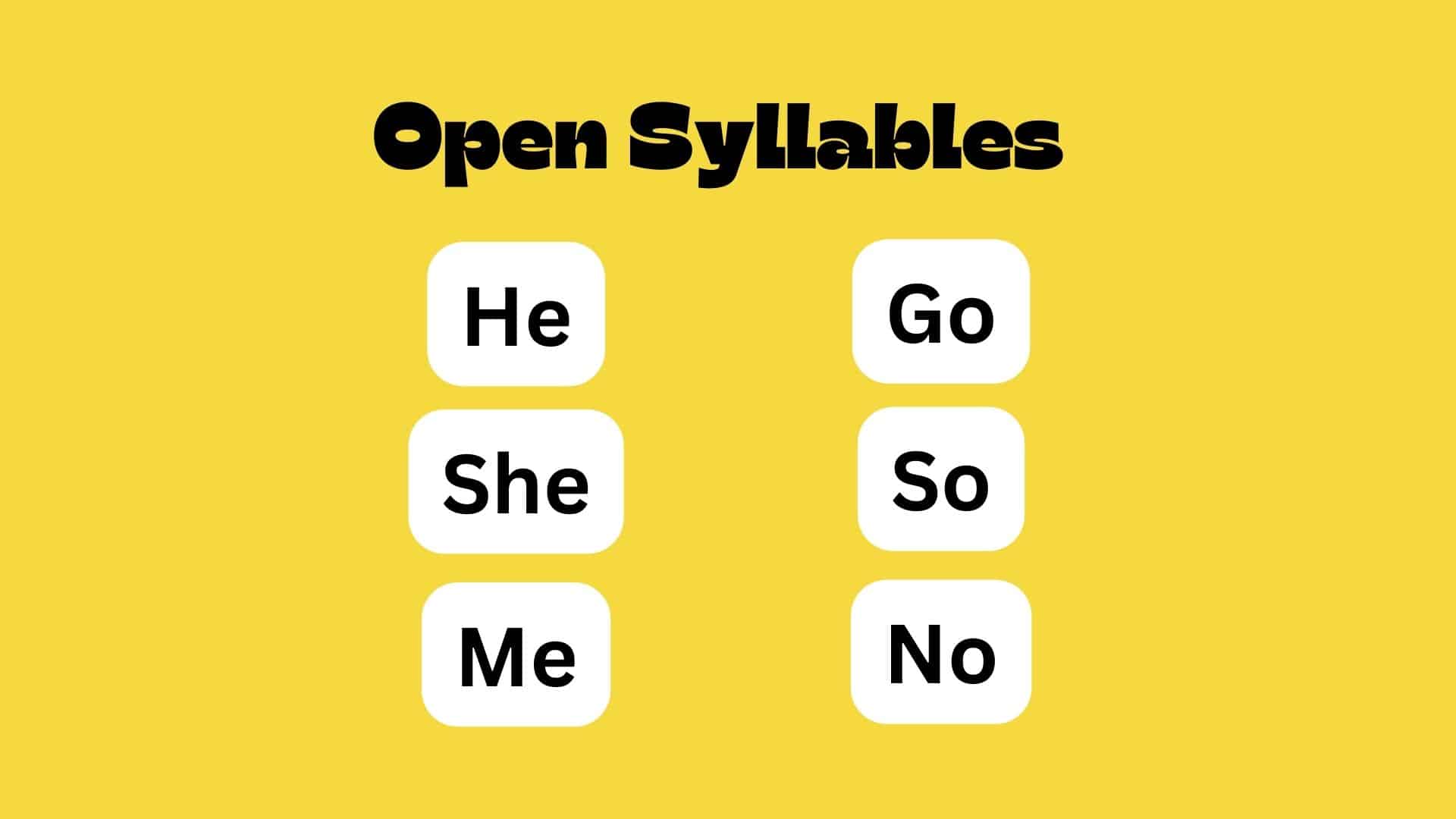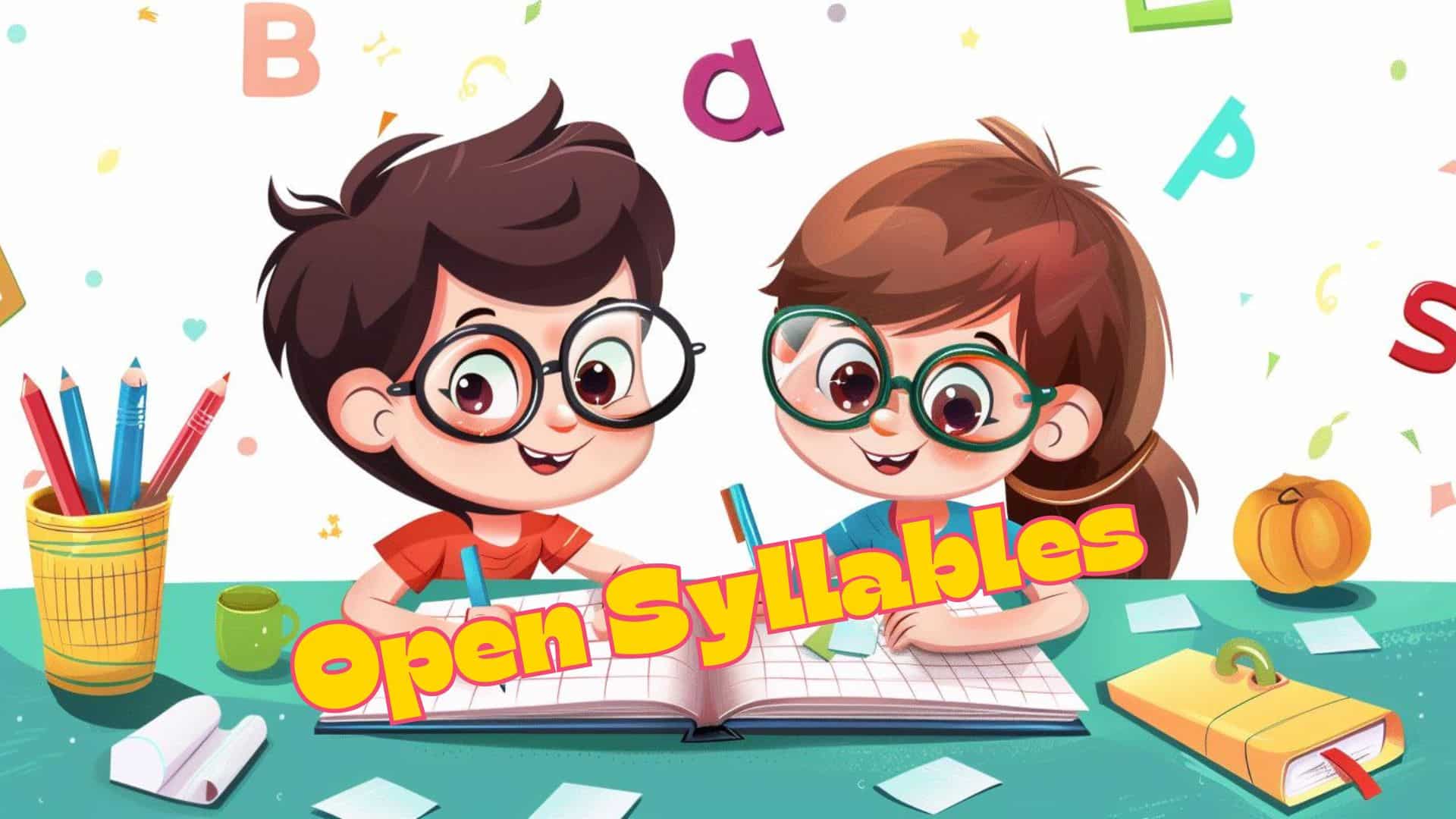Learning a new language can be tough, especially when it comes to mastering the various sounds and pronunciation rules.
One key concept that often trips up beginners is the difference between open and closed syllables. While closed syllables are more common, understanding open syllables is crucial for developing proper pronunciation and reading skills.
In this post, we’ll explore what open syllables are and why they matter in language learning. You’ll discover how focusing on these syllables can improve your ability to read, speak, and comprehend a new language more effectively.
We’ll break down the basics of open syllables, provide clear examples, and share practical tips for incorporating this knowledge into your language studies. By the end, you’ll have a solid grasp of this essential concept.
Understanding Open Syllables

1. Characteristics of Open Syllables
Open syllables have one key feature that sets them apart from other syllable types: they end with a vowel sound. This means no consonants follow the vowel, which allows it to make a long sound.
For example, in the word “she,” the “e” has a long “e” sound. In contrast, closed syllables have consonants after the vowel, which makes the vowel take on a short sound, as in the word “cat.”
2. Examples of Open Syllables
Many common words in English are open syllables. A few examples include “go,” “she,” “me,” “no,” and “why.” Even single-letter words like “a” and “I” are open syllables.
By focusing on these examples, you can start to recognize the pattern and sound of open syllables more easily.
3. Application in Words
Open syllables don’t just occur as single-syllable words. They also appear in longer words, especially at the beginning or middle of the word.
Take the word “baby,” which is split into two syllables: “ba-by.” Here, “ba” is an open syllable because the vowel “a” comes at the end and makes a long “a” sound.
Recognizing these open syllables within words can help language learners break down and read unfamiliar vocabulary more accurately.
Benefits of Learning Open Syllables
1. Ease of Recognition
- Simplicity of the Structure: Open syllables have a straightforward structure that makes them easy to spot. They usually have just a few letters, with a vowel sound at the end. This simple pattern is less complex than other syllable types, which may have multiple consonants after the vowel. As a result, learners can quickly learn to recognize open syllables when they see them.
- Recognition Techniques: One effective way to identify open syllables is to look for single vowels at the ends of words or word parts. For instance, in the word “open,” the “o” is an open syllable. Teaching learners to break words into smaller chunks and find these ending vowels is a powerful tool in early reading instruction. It helps students understand how words are formed and pronounced.
2. Improving Reading Skills
- Enhanced Fluency: When learners can easily recognize open syllables, they can read words more quickly and smoothly. Instead of stopping to sound out each letter, they can see the syllable pattern and anticipate the long vowel sound. This leads to more fluent reading, as students spend less time decoding individual words and more time focusing on the overall meaning of the text.
- Improved Comprehension: As reading fluency improves, so does comprehension. When learners can read words quickly and accurately, they can focus more on understanding the content. They don’t have to devote as much mental energy to figuring out each word, so they can concentrate on following the story, information, or presented ideas. This leads to better overall understanding and retention.
3. Aid in Spelling and Pronunciation
- Accurate Spelling: Knowing that open syllables end with long vowel sounds can help learners spell words correctly. If they hear a word ending with a long vowel, they’ll know that the vowel is probably at the end of the syllable. Understanding the link between spelling and sound is a valuable tool for encoding language.
- Pronunciation Benefits: Just as open syllables can guide spelling, they also help with pronunciation. When learners see a syllable ending with a vowel, they’ll know to pronounce it with a long sound. This is especially useful for those learning English as a second language, as it provides a rule-based approach to pronunciation. Instead of guessing or relying solely on memorization, learners can use their knowledge of open syllables to sound out words.
Teaching Strategies for Open Syllables
1. Sequential Learning
- Foundational Approach: To effectively teach open syllables, starting with a solid foundation is crucial. Learners should first master closed syllables, which are more common and have a simpler structure. By ensuring students have a strong grasp of closed syllables, you provide a basis for understanding how syllables work in general. This sequential approach allows learners to build their skills gradually and logically.
- Building Complexity: Once students are comfortable with closed syllables, you can introduce open syllables as the next level of complexity. This progression from simpler to more advanced syllable types helps learners develop a comprehensive understanding of phonics. It also builds their confidence, as they can see how their knowledge of closed syllables applies to open syllables and how the two types work together in words.
2. Multisensory Teaching Techniques
- Variety of Sensory Inputs: Everyone learns differently, so it’s important to use teaching methods that engage multiple senses. This multisensory approach can include visual aids, auditory activities, and hands-on experiences. By presenting information in various ways, you cater to different learning styles and help students form stronger connections with the material.
- Examples of Techniques: One effective visual aid is a chart showing examples of open syllables contrasting with closed syllables. Students can refer to this chart as they learn and practice. Auditory techniques include having students repeat the sounds of open syllables out loud, emphasizing the long vowel sounds. Kinesthetic learners benefit from sorting word cards into open and closed syllable categories and using physical movement to reinforce the concepts.
3. Integration with Phonemic Awareness
- Role in Phonics Instruction: Open syllables are a key component of comprehensive phonics instruction. They build on the foundation of phonemic awareness, which is the understanding that words comprise individual sounds. By teaching open syllables in the context of overall phonics, you help students develop a holistic understanding of how sounds and letters work together to form words.
- Practical Integration Strategies: To integrate open syllables with phonemic awareness, you can use activities focusing on blending and segmenting sounds. For example, have students identify the individual sounds in a word like “she” (/sh/ /ē/) and blend them to form the word. You can also incorporate open syllables into guided reading sessions, encouraging students to identify and read open syllables in the text. This helps them apply their knowledge practically and reinforces the connection between syllables and reading fluency.
Conclusion
By now, you’ve seen the power of open syllables in action. These simple structures are key to unlocking reading fluency, spelling accuracy, and clear pronunciation.
Incorporating open syllables into your teaching, using a sequential and multisensory approach, can make a profound difference in your student’s language journey.
But the benefits extend beyond the classroom. By mastering open syllables, learners gain a deeper understanding of how language works, empowering them to confidently tackle new words and texts.
So, whether you’re a seasoned educator or starting, embrace the potential of open syllables. Your students will thank you as they develop a lifelong love of language.
Ready to open the door to more effective language learning? Start exploring the world of open syllables today!









